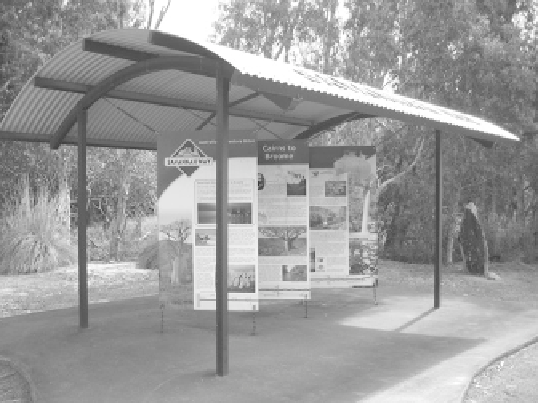Travel Reference
In-Depth Information
2000; Walker, 1996). As well, trail interpretive centers at the beginning, end
and at key places along the way in the case of long-distance routes are impor-
tant in disseminating information and creating a conservation ethos in these
linear environments. Interpretive centers are extremely important for routes
that are operated and maintained by public agencies (Lindley, 2000; Mudway,
2004). They allow data collection, donations collection and dissemination of
information. They also provide rest areas and sometimes even other travel
services: souvenirs, snacks and lodging reservations. Not all interpretive cen-
ters have to be staffed, however. Unstaffed interpretive facilities along routes
and byways can be key in disseminating information and providing direc-
tions (Figure 7.3).
Interpretation for all is an important part of the 'access for all' concept
noted in the previous chapter. Legal obligations, as well as good public rela-
tions and customer service, require interpretive programs to cater to the
needs of visitors with physical disabilities and hearing and visual impair-
ments. Services such as large-print brochures, guides and Braille signs
enhance many people's interpretive center experiences. Alternatives to print,
such as subtitles on videos and touch-screen technology expand the indepen-
dence of visitors with disabilities (Haynes & Cope, 1998; Young, 1998).
Other special populations might also exist, especially when a route or
corridor is world famous. In this instance, it will attract tourists from all
around the globe, and depending on the results of various market analyses,
it may be important to provide bilingual or multilingual interpretation
(Carabelli, 2002; Timothy & Boyd, 2003).
Figure 7.3
An unstaffed interpretive center on a scenic byway in Australia

Search WWH ::

Custom Search